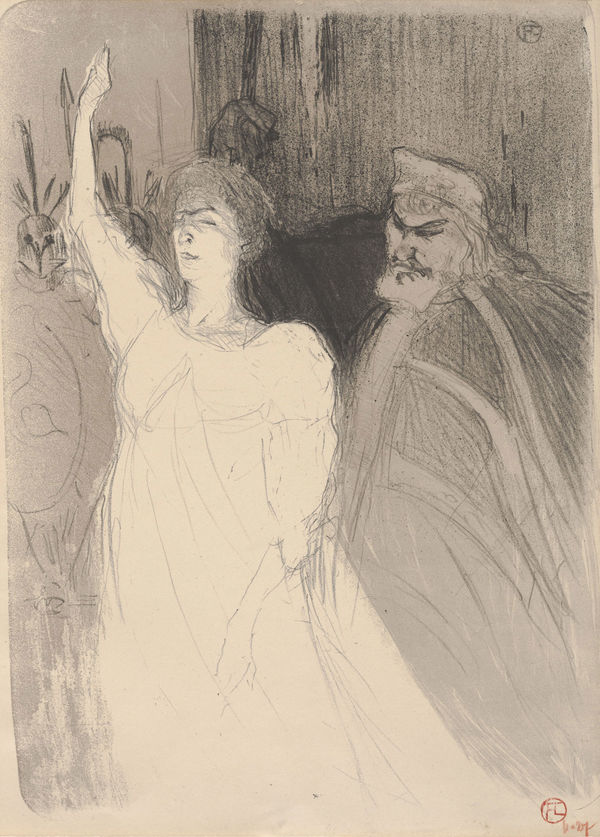Rock-Paper . . . Lithographs from the Permanent Collection, Part I
On view through November 16, 2014
NOTRE DAME, IN—The Snite Museum of Art continues its celebration of printmaking with a focus exhibition of ten lithographs, many of them new acquisitions or never before displayed, with the presentation ofRock-Paper . . . . Lithographs from the Permanent Collection from August 24 through November 16, 2014.
Part one of this two-part series examines lithography from its invention in 1798 through its many technical and functional developments in the 1800s. Lithographs are prints made from a stone with a design drawn onto it with a greasy crayon. Unlike etchings and engravings, which are made from metal plates with the design incised into the surface, lithographs are more fluid and look like drawings. Its tonal range and the large quantity of impressions that can be pulled from a lithographic stone are two of the advantages it has over etchings and engravings.

“Following on the heels of exhibitions of woodcuts by Albrecht Dürer and engravings by Robert Nanteuil and Anton Würth last spring, this lithography show introduces visitors to even more artistic potential available to printmakers,” said Cheryl Snay, curator of European art at the Snite Museum.
Invented by German playwright Alois Senefelder, lithography was first used for reproducing sheet music. Artists soon recognized the new medium’s potential for making pictures. Combined with the growing newspaper industry, lithography spurred the democratization of art. Illustrated news articles could be quickly and easily produced, and the genre of political and social satire surged. French artist Honoré Daumier, whose prints are featured in the exhibition, became one of the most prolific and brilliant caricaturists of the period. At the end of the century, the poster craze took a decidedly avant-garde turn with the work of Henri de Toulouse-Lautrec.
Other artists, such as the American ex-patriot James Abbott McNeill Whistler, pushed the medium beyond its popular applications and elevated it to the level of “fine” art.
Part two of the series scheduled for 2015 will feature modern and contemporary lithographs from the collection, including works by Jasper Johns and Robert Rauschenberg.
Rock-Paper . . . is organized by the Snite Museum of Art and is made possible by the Snite Museum General Endowment.
Photo Caption: Henri de Toulouse-Lautrec (French, 1864–1901), Bartet and Mounet-Sully, in Antigone, 1893, crayon and brush lithograph on cream wove paper, 14.94 × 11.13 in (sheet). Gift of Dr. and Mrs. R. Stephen Lehman, 2012.105
For additional images, contact Gina Costa at gcosta@nd.edu or 574-631-4720.
Originally published at publicaffairs.nd.edu.